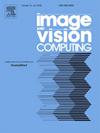AGIL-SwinT: Attention-guided inconsistency learning for face forgery detection
IF 4.2
3区 计算机科学
Q2 COMPUTER SCIENCE, ARTIFICIAL INTELLIGENCE
引用次数: 0
Abstract
Face forgery detection (FFD) plays a vital role in maintaining the security and integrity of various information and media systems. Forgery inconsistency caused by manipulation techniques has been proven to be effective for generalizing to the unseen data domain. However, most existing works rely on pixel-level forgery annotations to learn forgery inconsistency. To address the problem, we propose a novel Swin Transformer-based method, AGIL-SwinT, that can effectively learn forgery inconsistency using only video-level labels. Specifically, we first leverage the Swin Transformer to generate the initial mask for the forgery regions. Then, we introduce an attention-guided inconsistency learning module that uses unsupervised learning to learn inconsistency from attention. The learned inconsistency is used to revise the initial mask for enhancing forgery detection. In addition, we introduce a forgery mask refinement module to obtain reliable inconsistency labels for supervising inconsistency learning and ensuring the mask is aligned with the forgery boundaries. We conduct extensive experiments on multiple FFD benchmarks, including intra-dataset, cross-dataset and cross-manipulation testing. The experimental results demonstrate that our method significantly outperforms existing methods and generalizes well to unseen datasets and manipulation categories. Our code is available at https://github.com/woody-xiong/AGIL-SwinT.
AGIL-SwinT:用于人脸伪造检测的注意力引导的不一致性学习
人脸伪造检测(FFD)在维护各种信息和媒体系统的安全性和完整性方面发挥着至关重要的作用。操纵技术造成的伪造不一致性已被证明可以有效地推广到未见数据领域。然而,现有的大多数工作都依赖于像素级的伪造注释来学习伪造不一致性。为了解决这个问题,我们提出了一种基于 Swin 变换器的新方法 AGIL-SwinT,它只需使用视频级标签就能有效地学习伪造不一致性。具体来说,我们首先利用 Swin 变换器为伪造区域生成初始掩码。然后,我们引入注意力引导的不一致性学习模块,利用无监督学习从注意力中学习不一致性。学习到的不一致性被用来修改初始掩码,以提高伪造检测能力。此外,我们还引入了伪造掩码完善模块,以获得可靠的不一致标签,从而监督不一致学习,确保掩码与伪造边界保持一致。我们在多个 FFD 基准上进行了广泛的实验,包括数据集内、跨数据集和跨操纵测试。实验结果表明,我们的方法明显优于现有方法,并能很好地推广到未见过的数据集和操作类别。我们的代码见 https://github.com/woody-xiong/AGIL-SwinT。
本文章由计算机程序翻译,如有差异,请以英文原文为准。
求助全文
约1分钟内获得全文
求助全文
来源期刊

Image and Vision Computing
工程技术-工程:电子与电气
CiteScore
8.50
自引率
8.50%
发文量
143
审稿时长
7.8 months
期刊介绍:
Image and Vision Computing has as a primary aim the provision of an effective medium of interchange for the results of high quality theoretical and applied research fundamental to all aspects of image interpretation and computer vision. The journal publishes work that proposes new image interpretation and computer vision methodology or addresses the application of such methods to real world scenes. It seeks to strengthen a deeper understanding in the discipline by encouraging the quantitative comparison and performance evaluation of the proposed methodology. The coverage includes: image interpretation, scene modelling, object recognition and tracking, shape analysis, monitoring and surveillance, active vision and robotic systems, SLAM, biologically-inspired computer vision, motion analysis, stereo vision, document image understanding, character and handwritten text recognition, face and gesture recognition, biometrics, vision-based human-computer interaction, human activity and behavior understanding, data fusion from multiple sensor inputs, image databases.
 求助内容:
求助内容: 应助结果提醒方式:
应助结果提醒方式:


